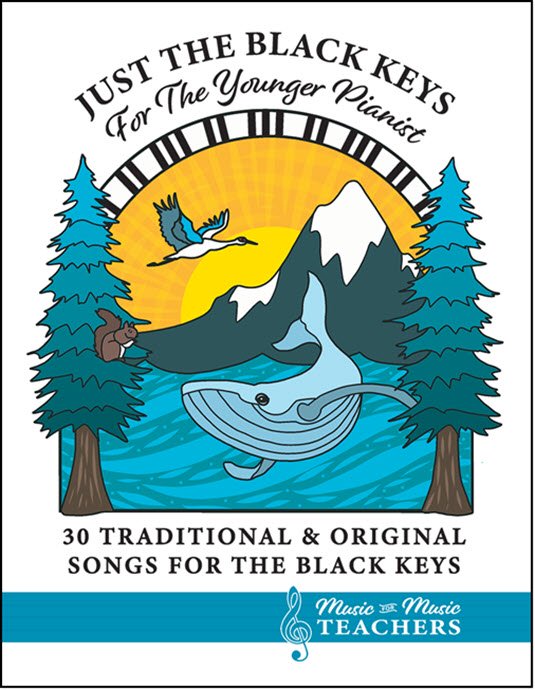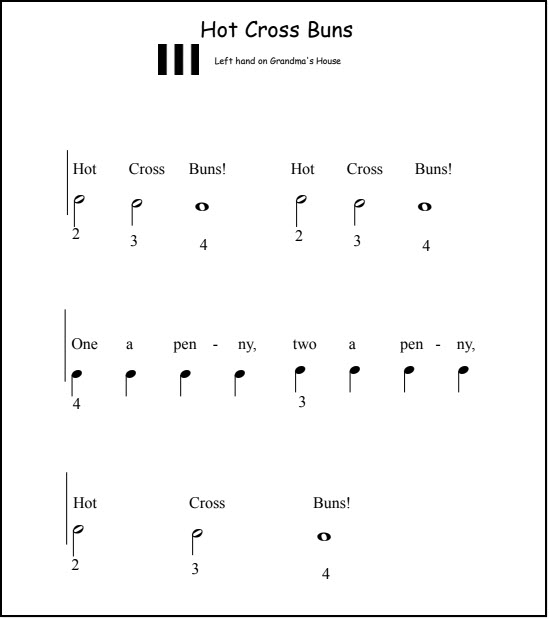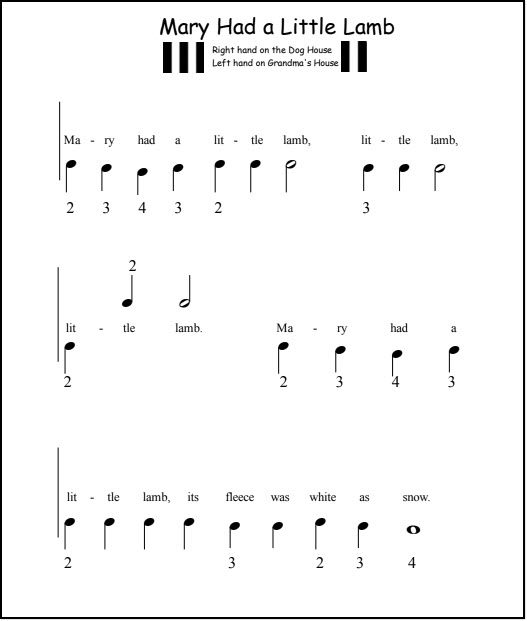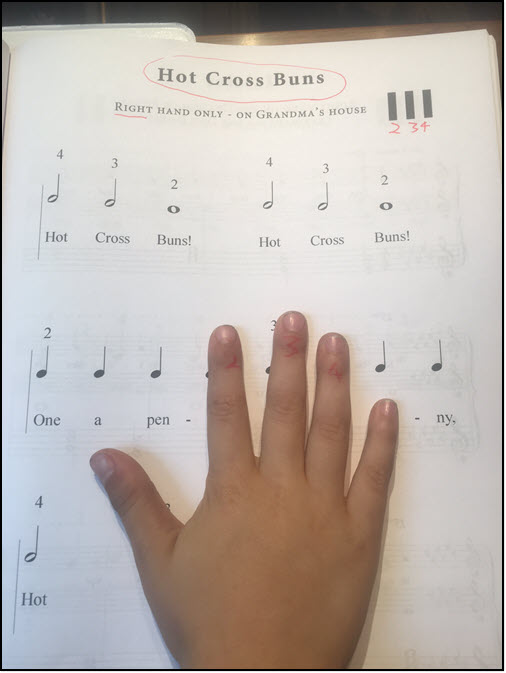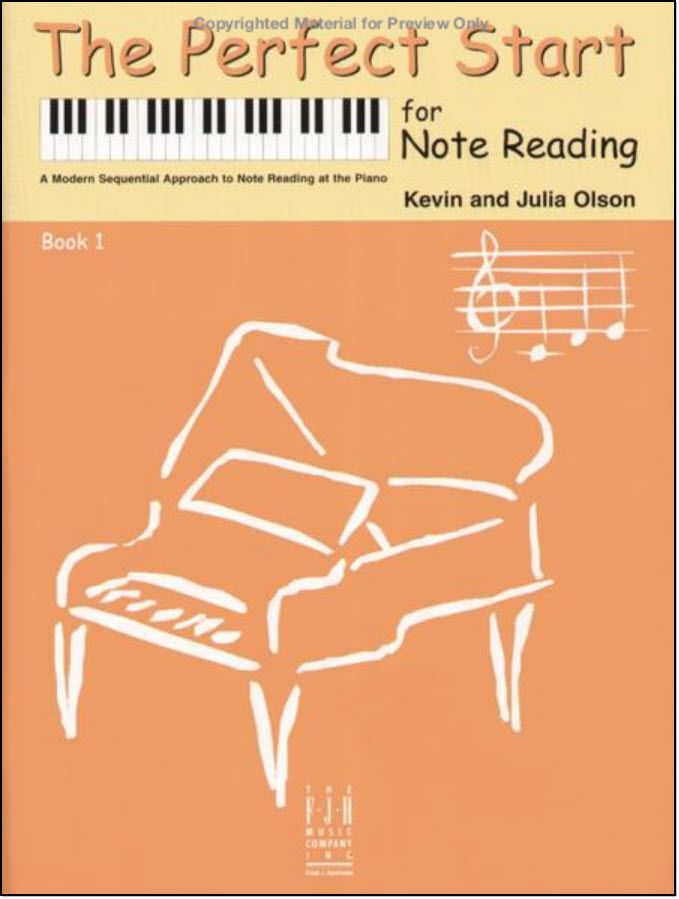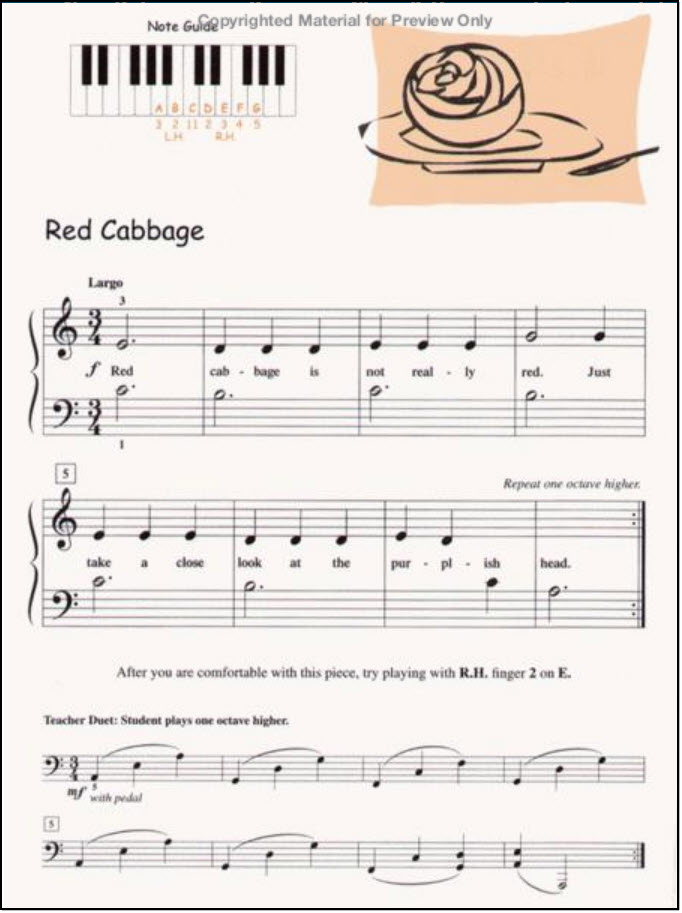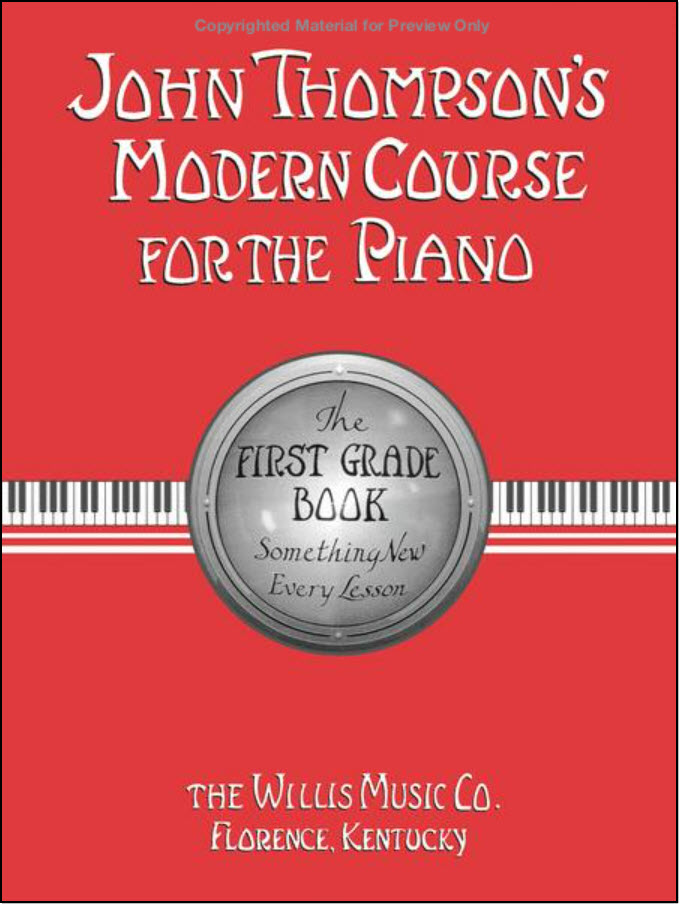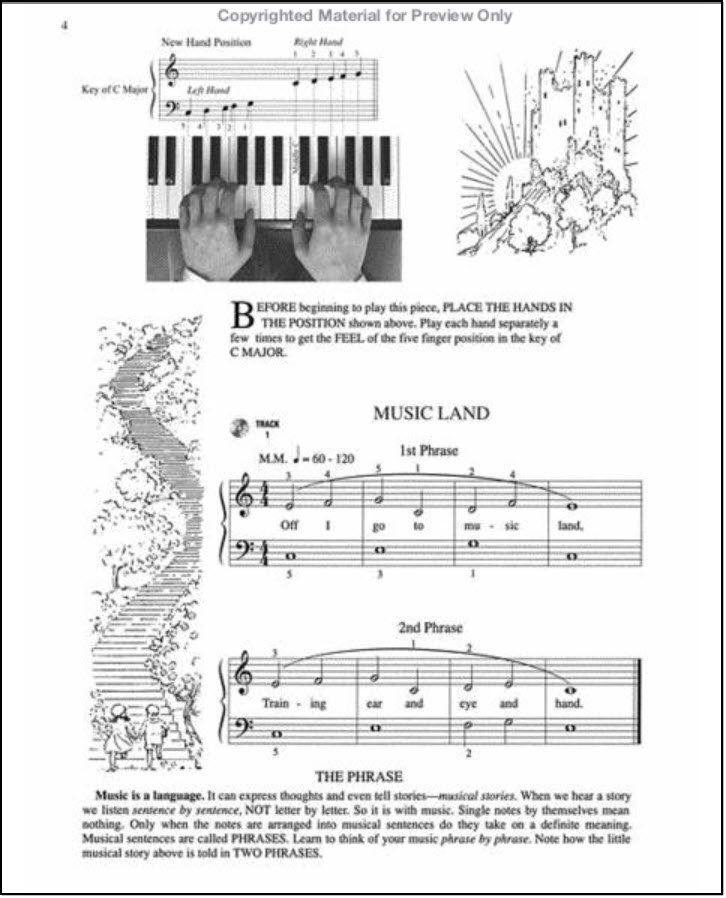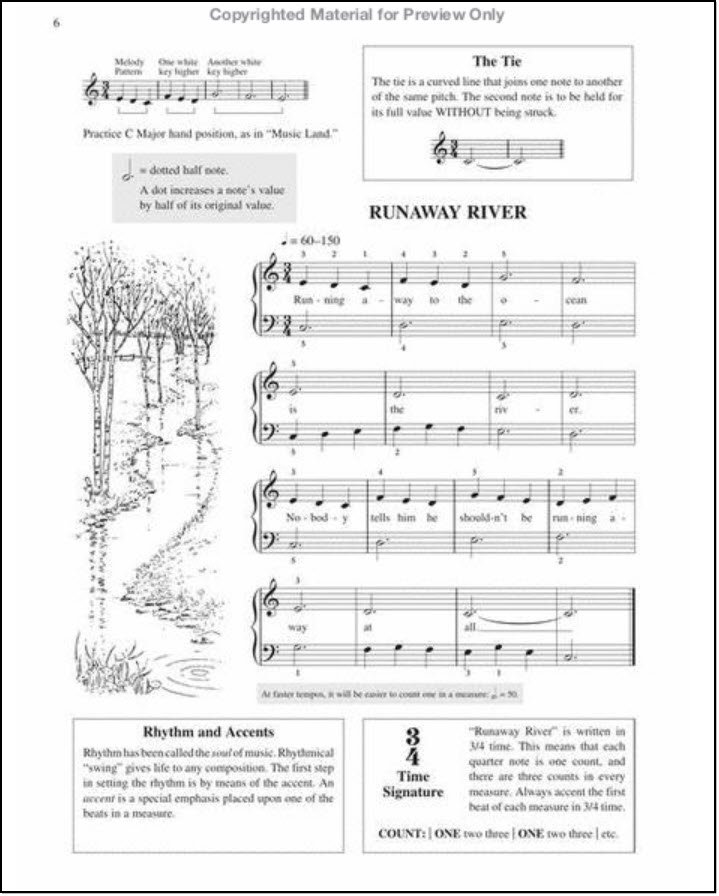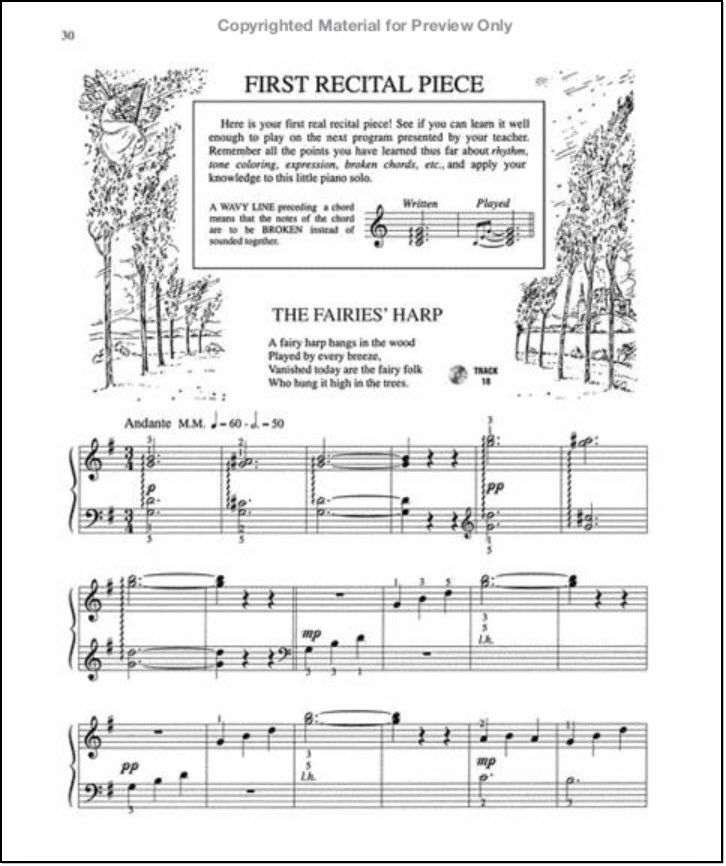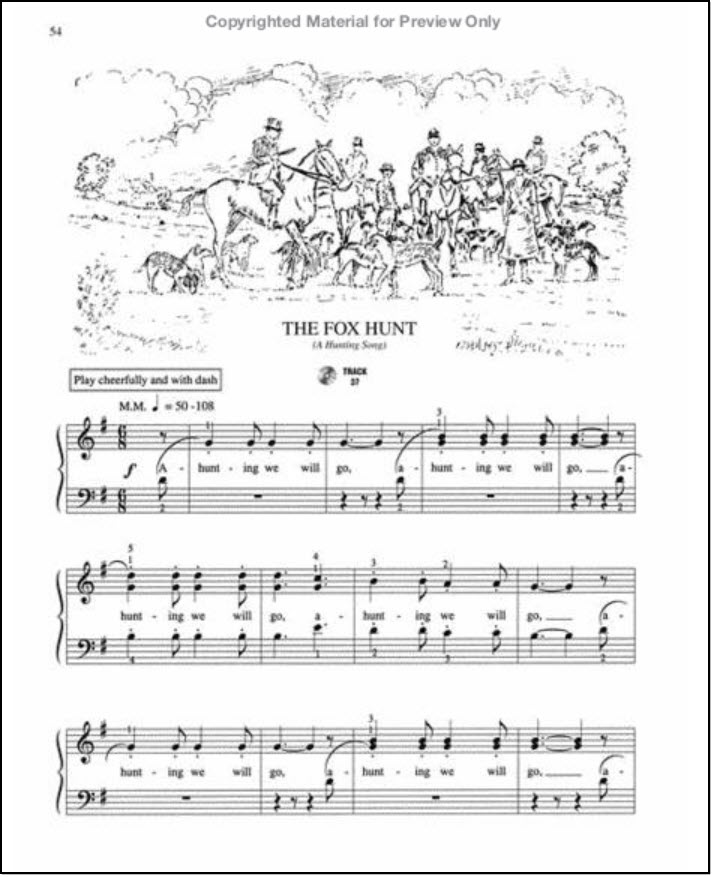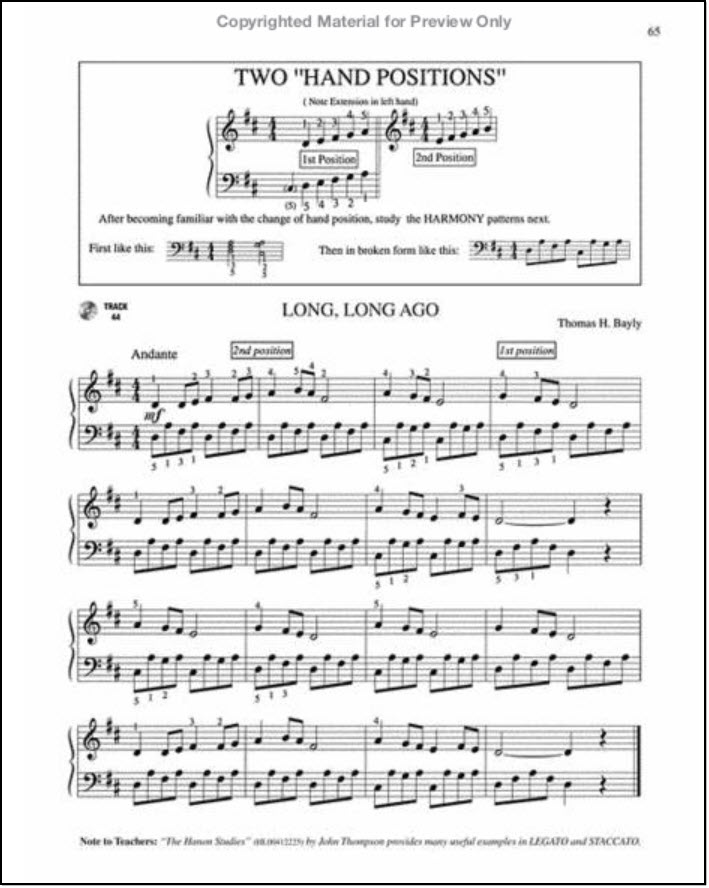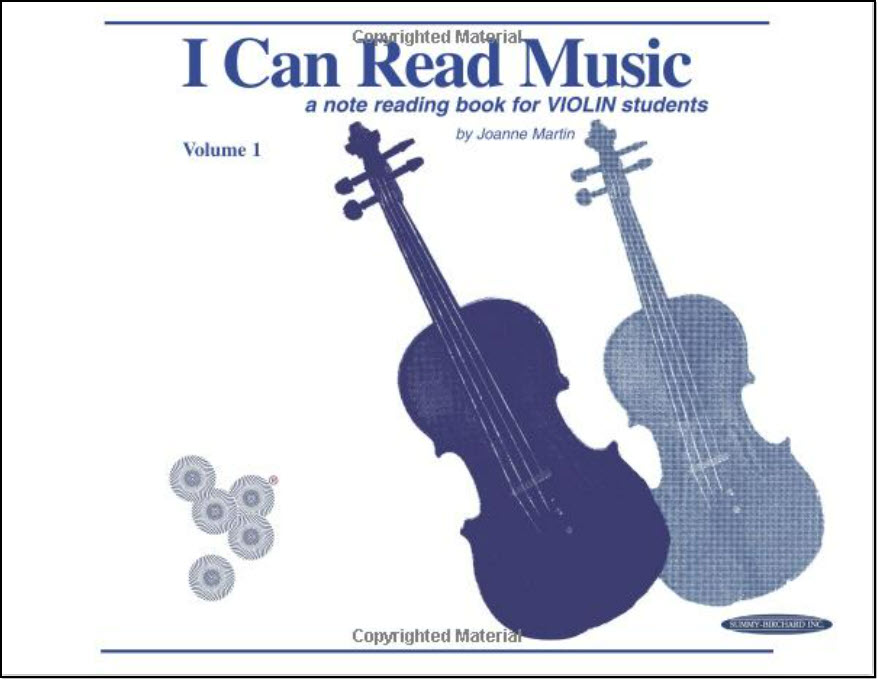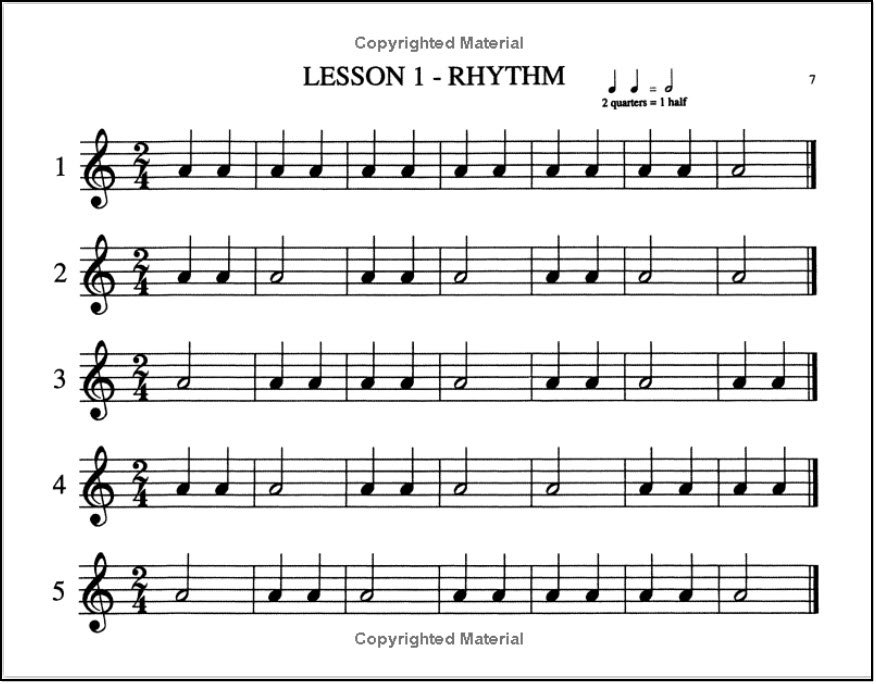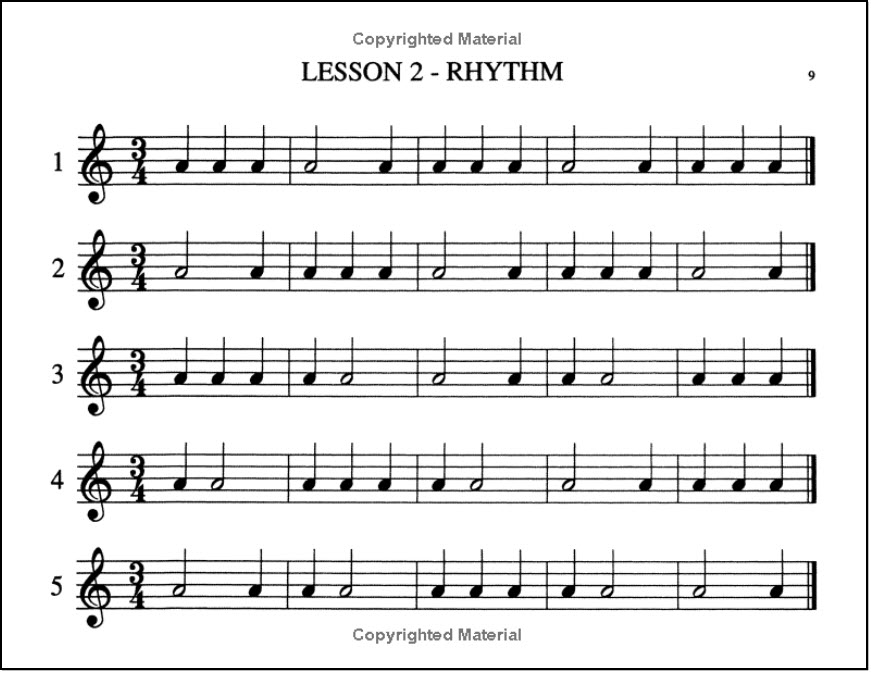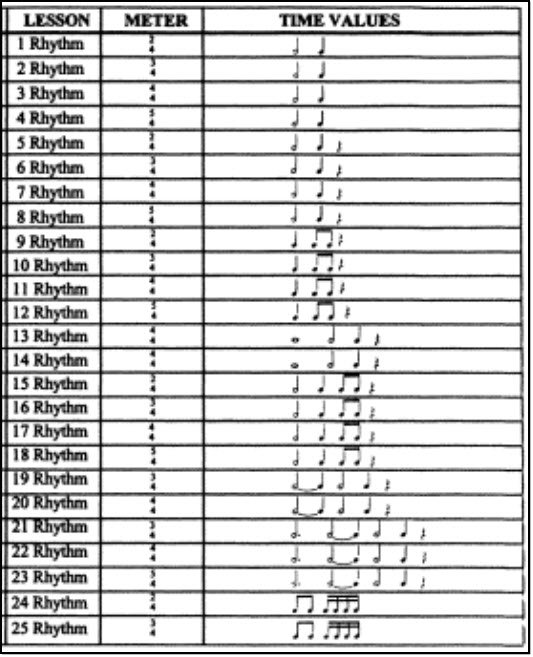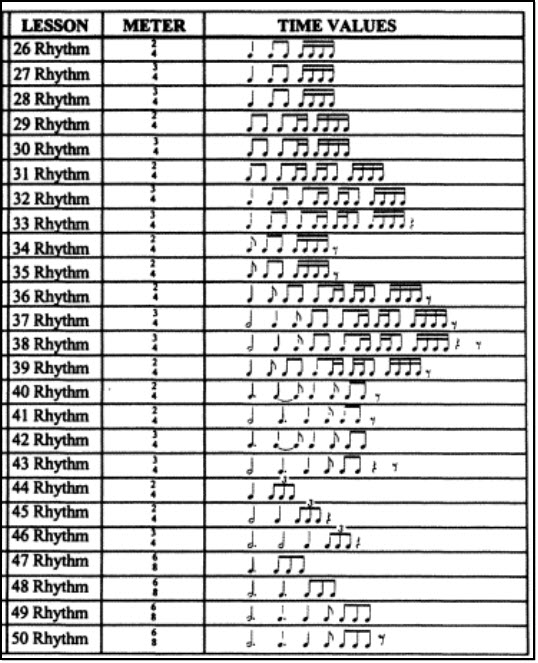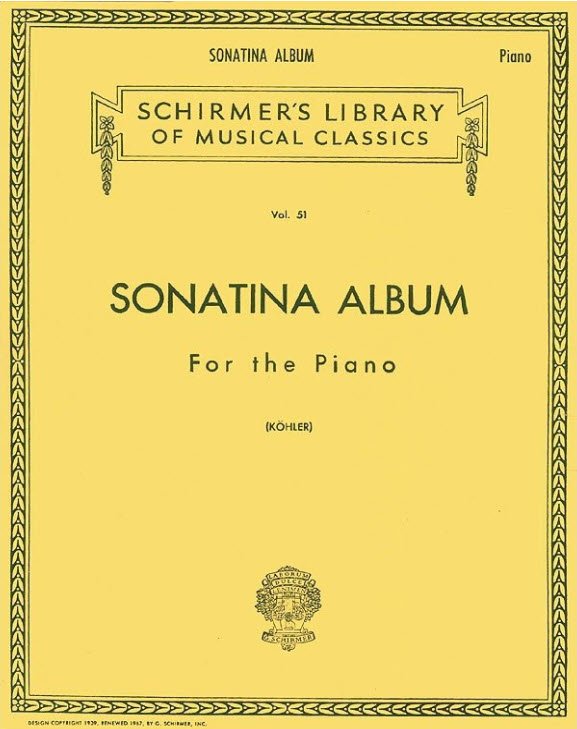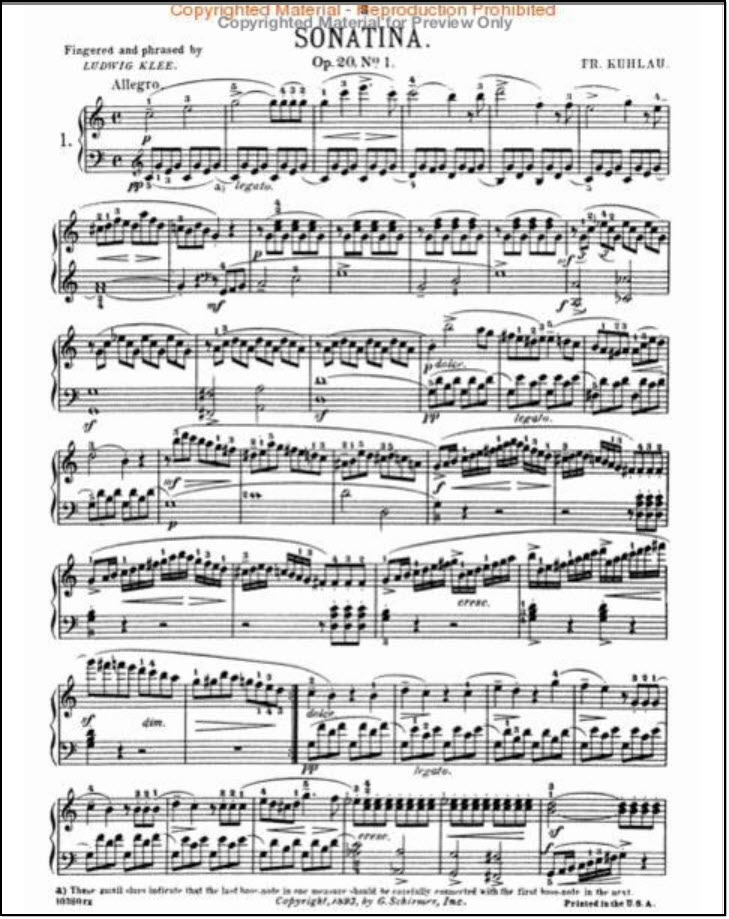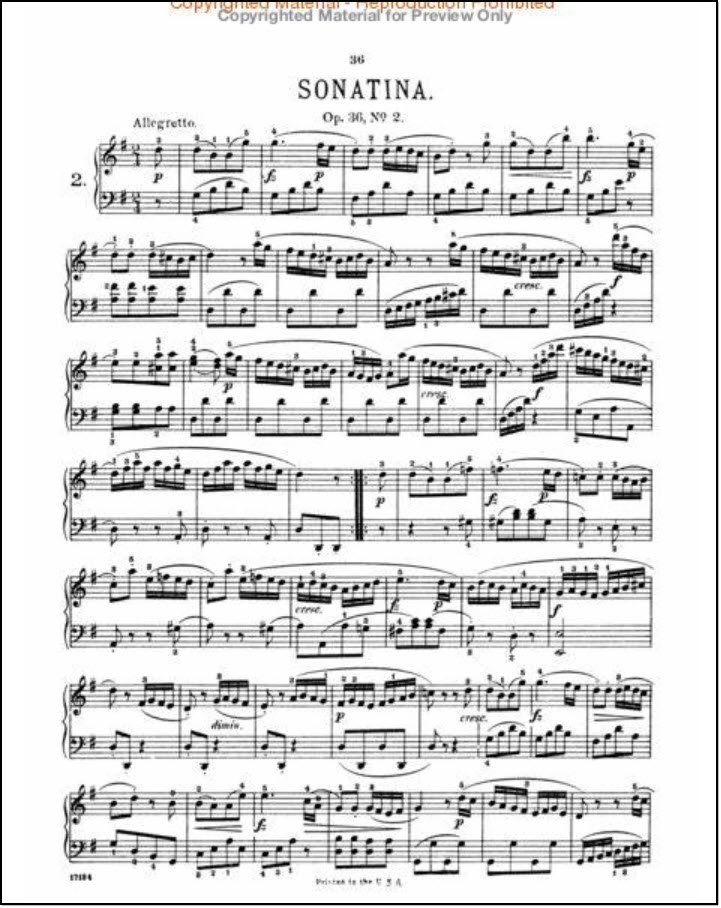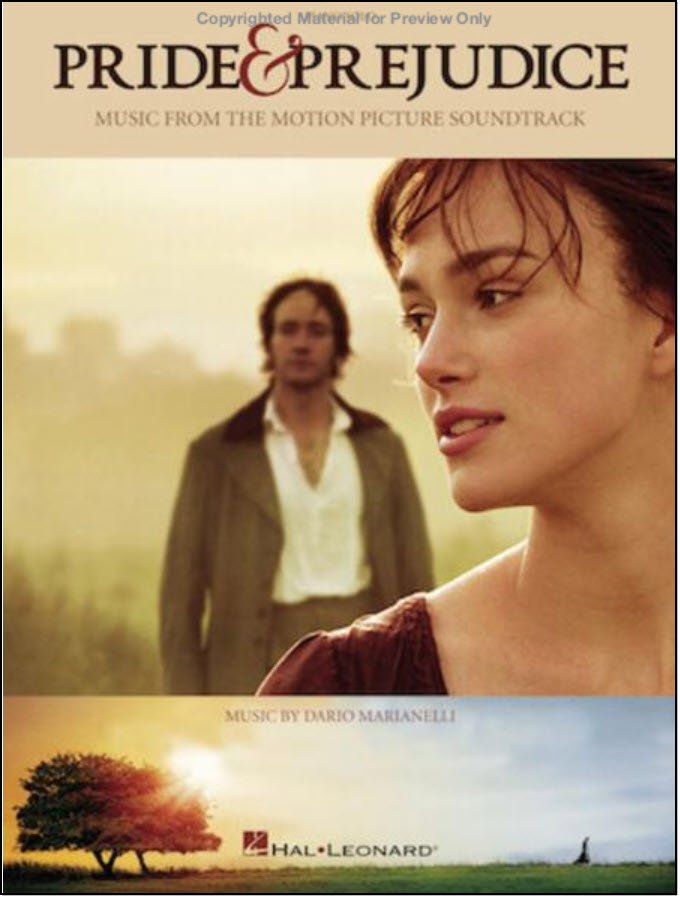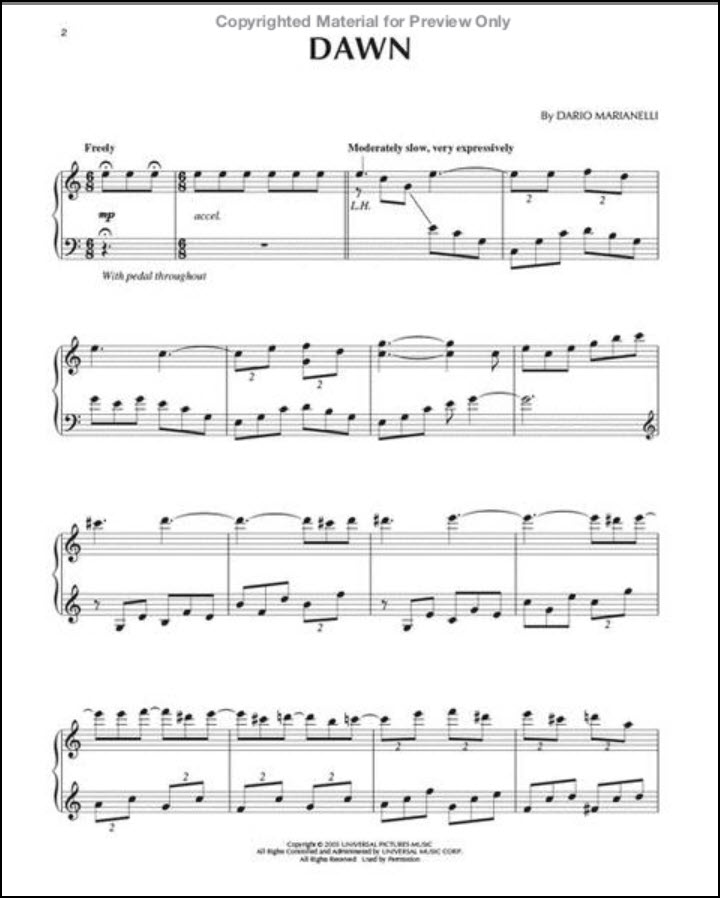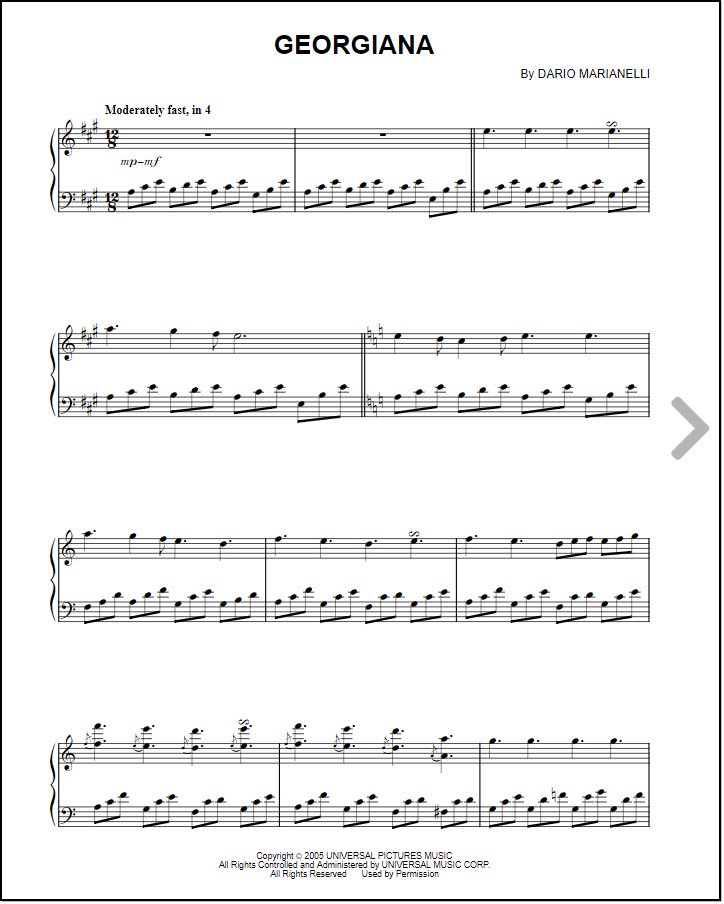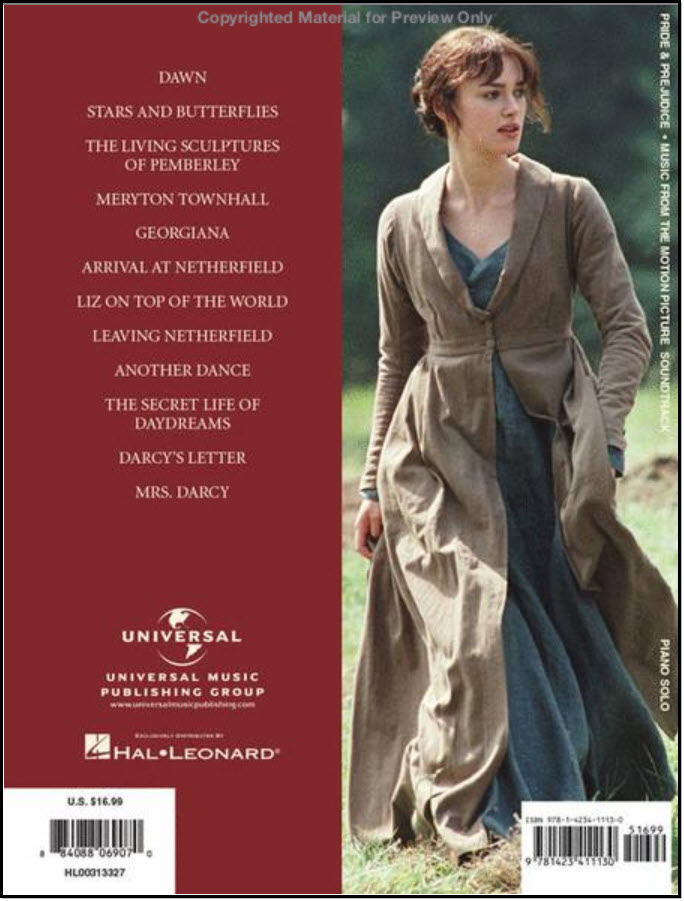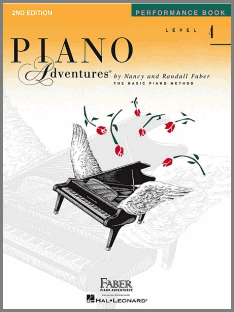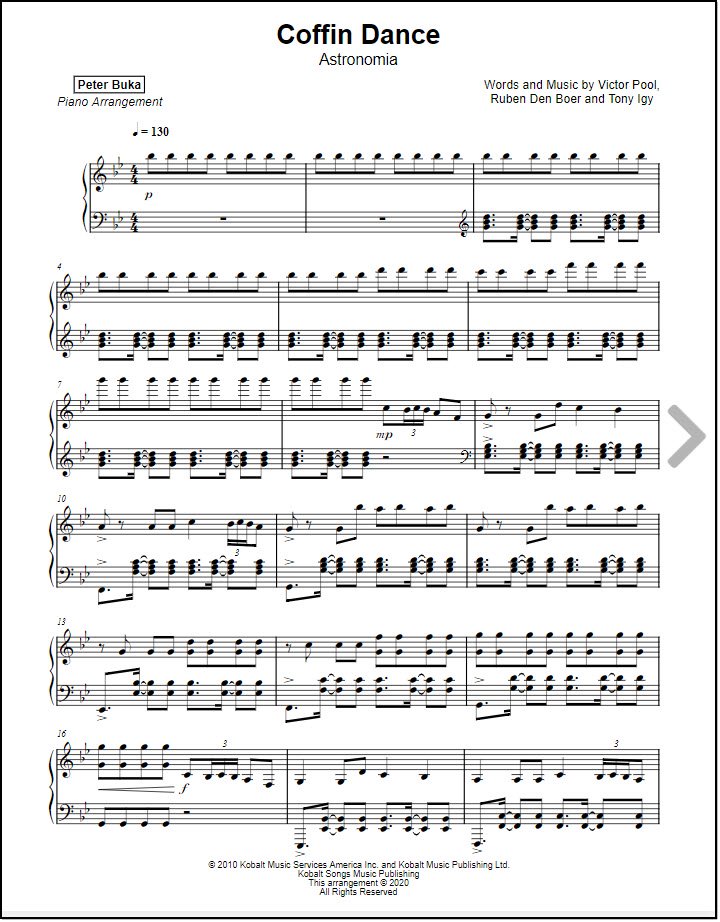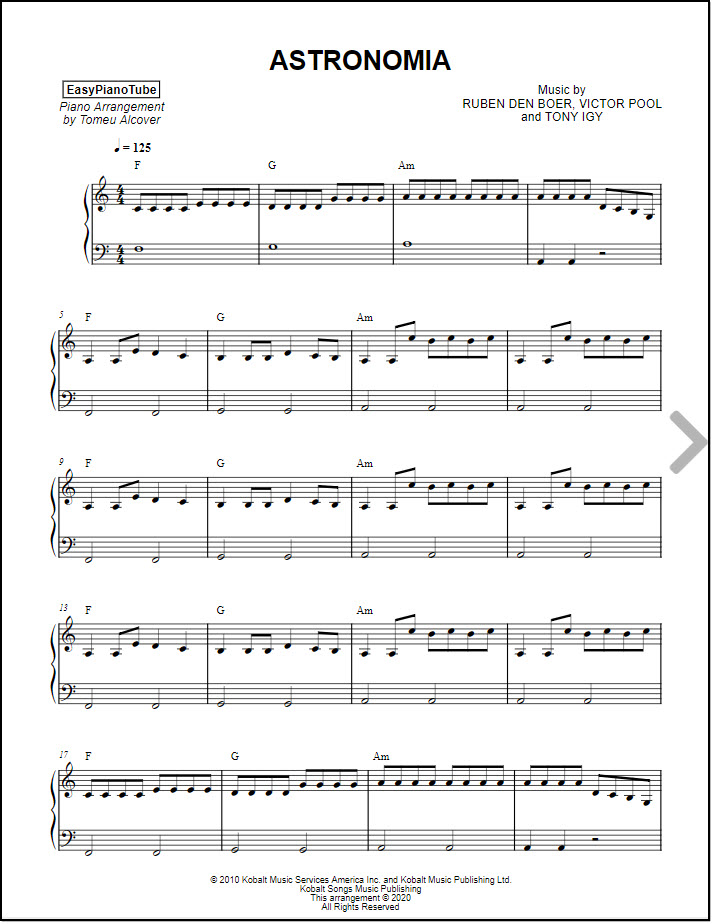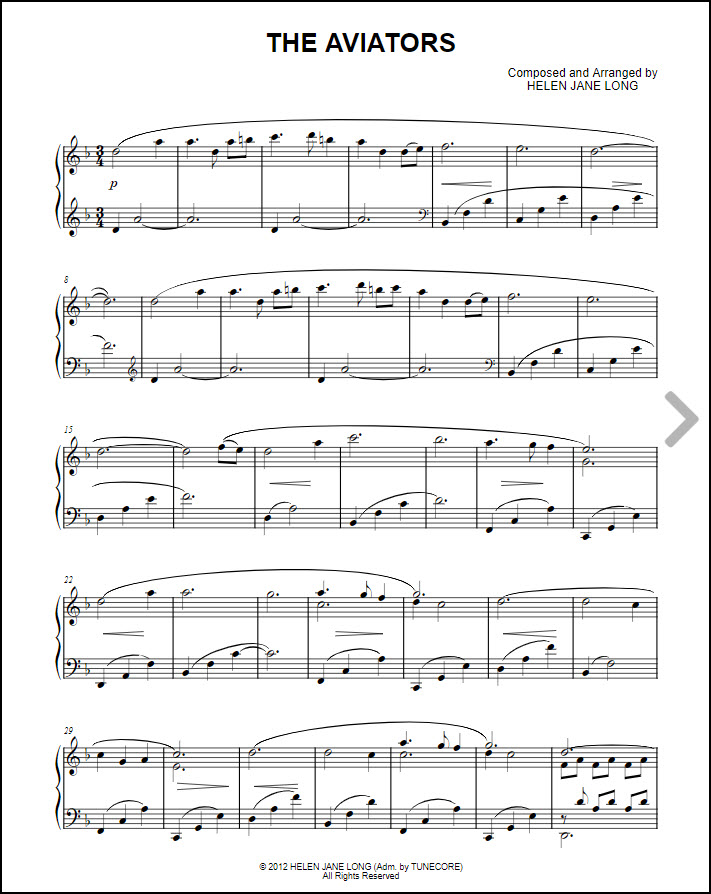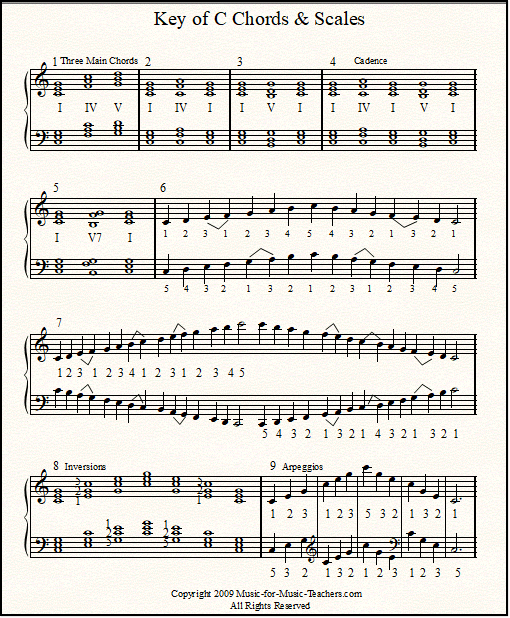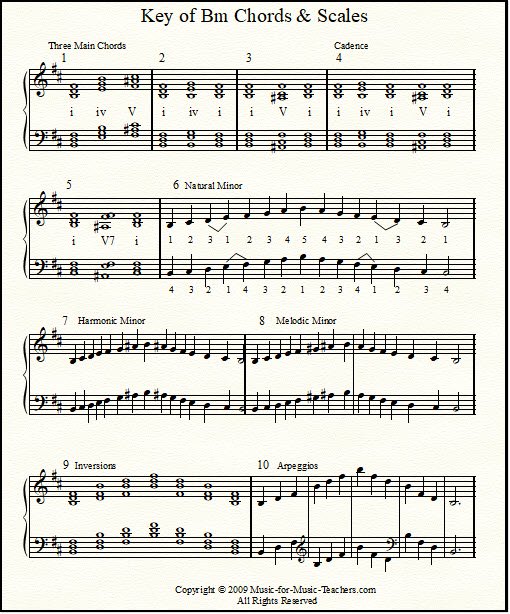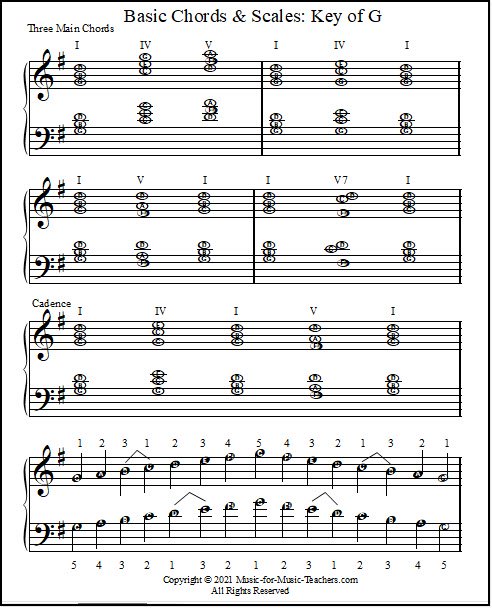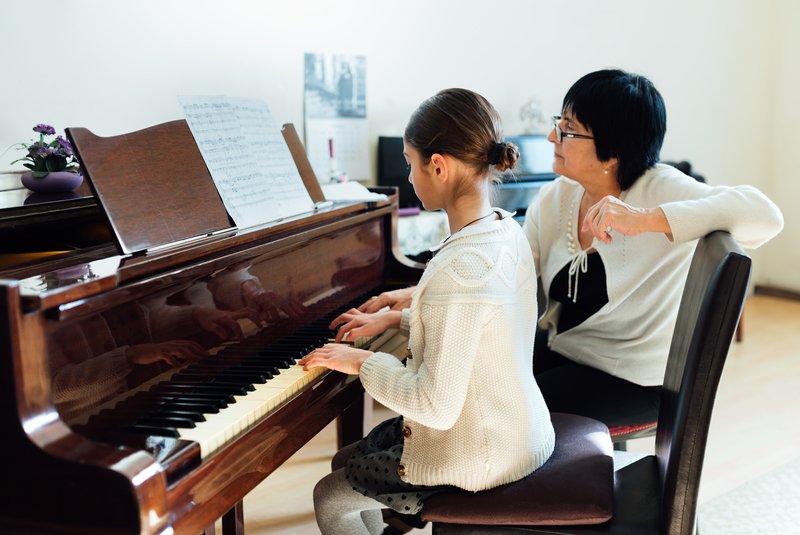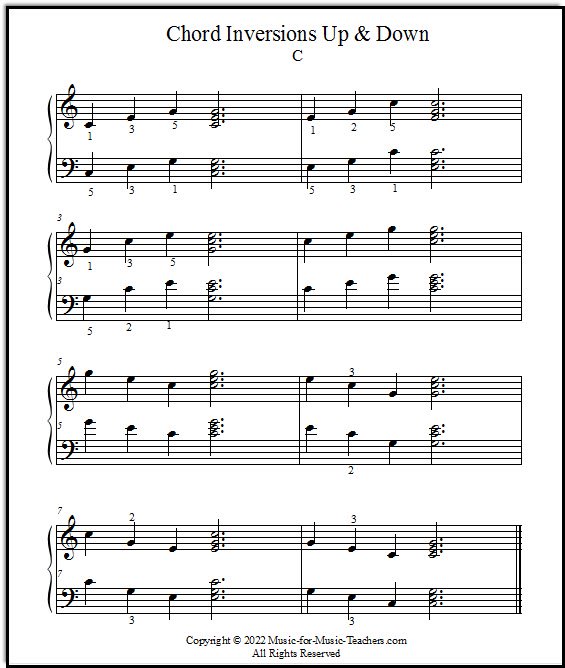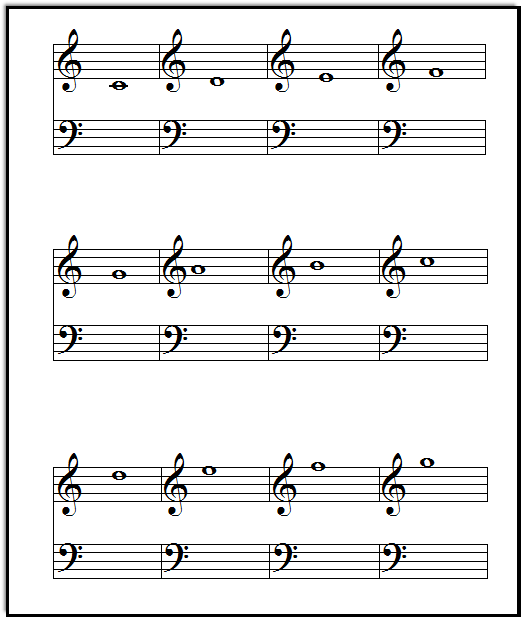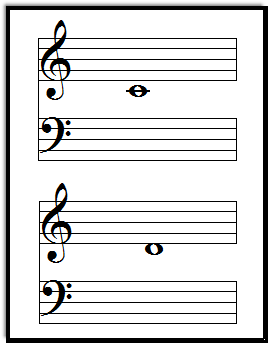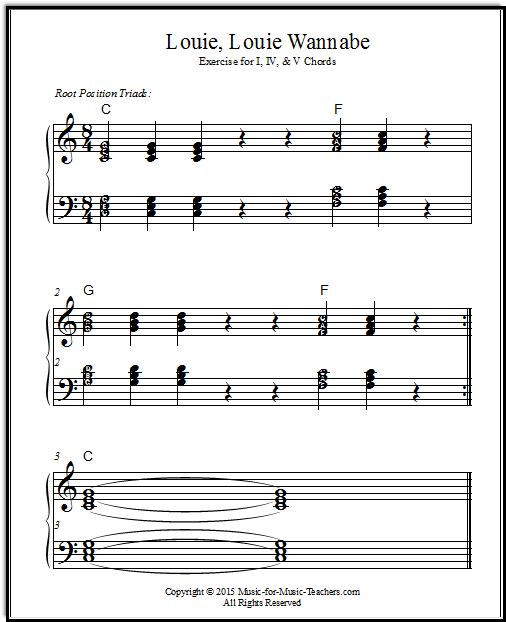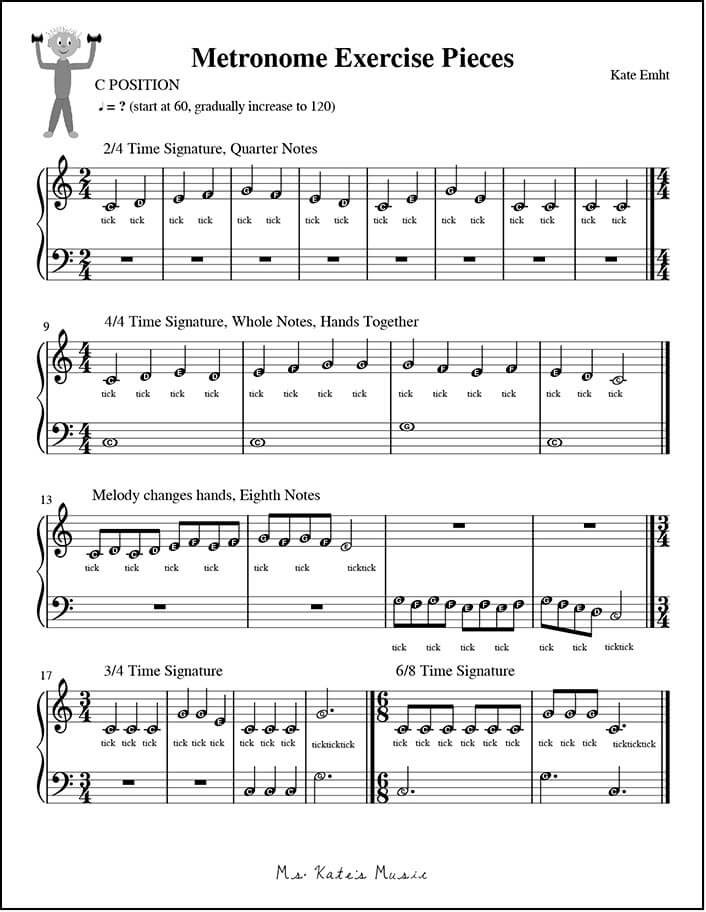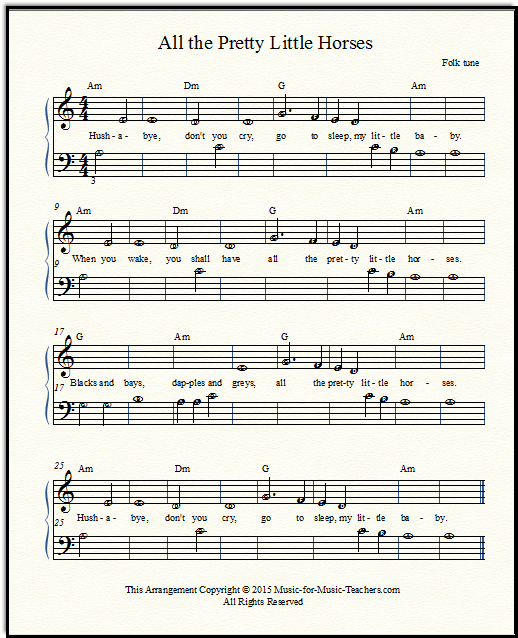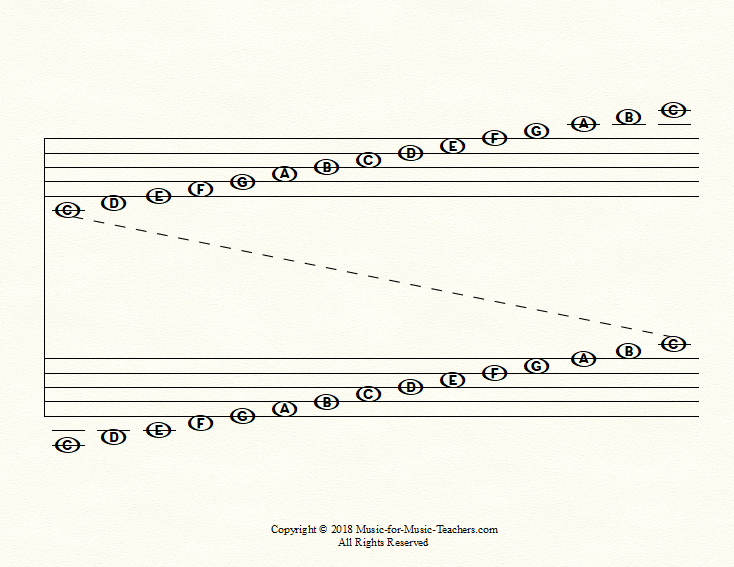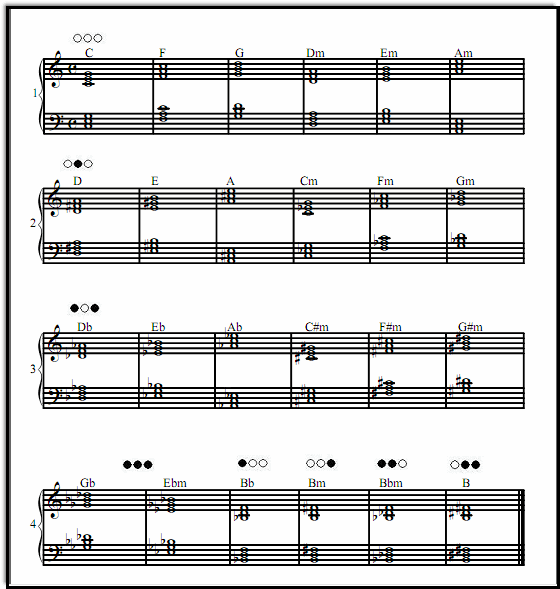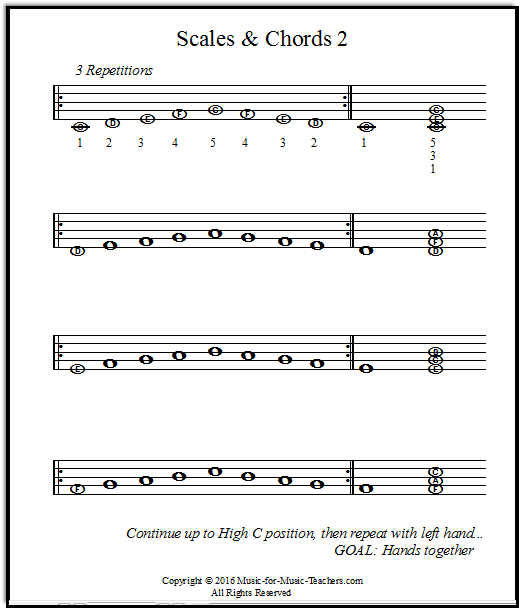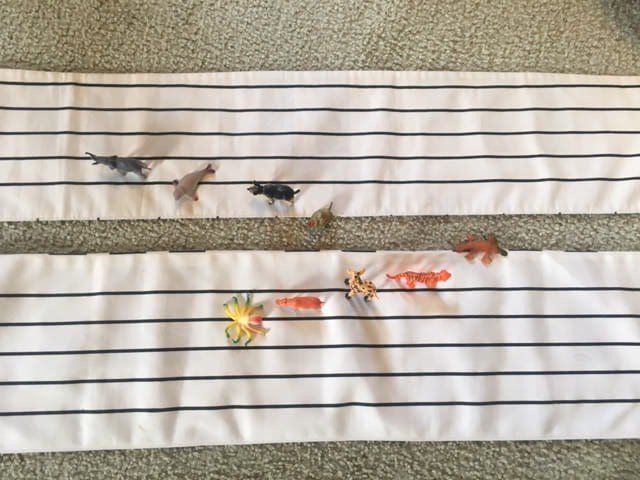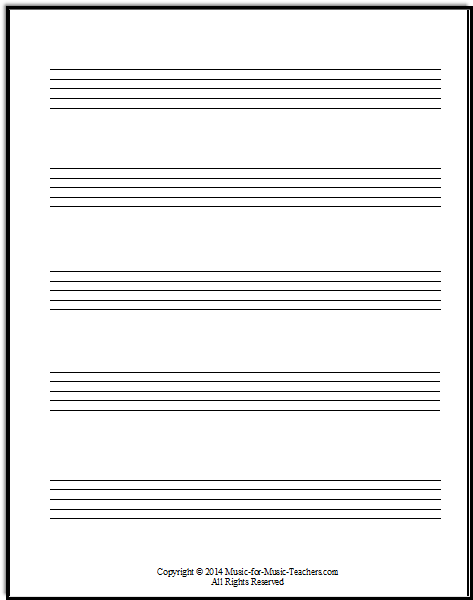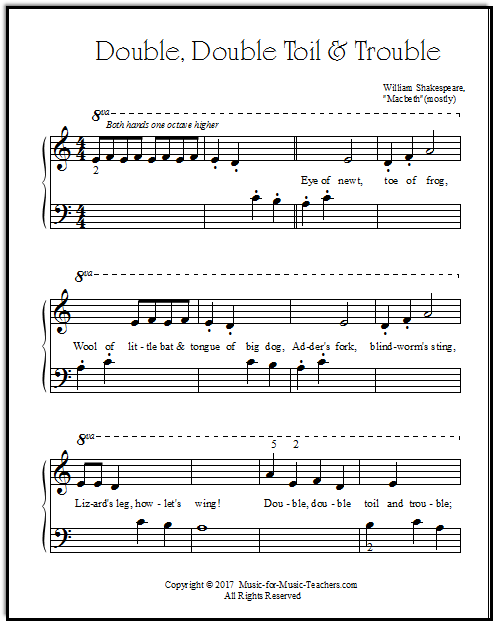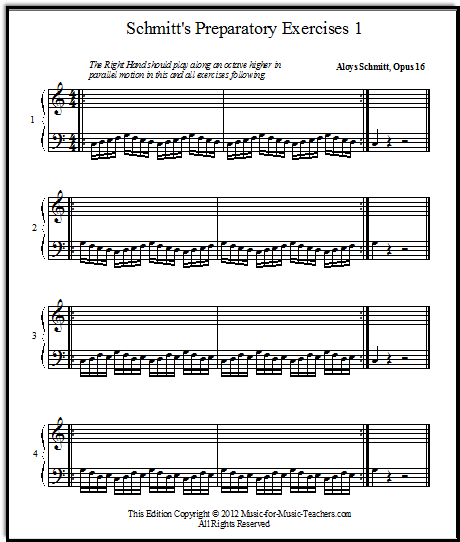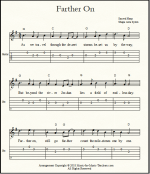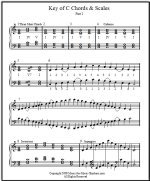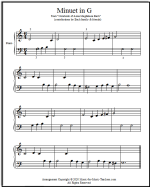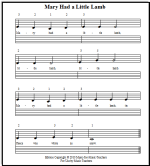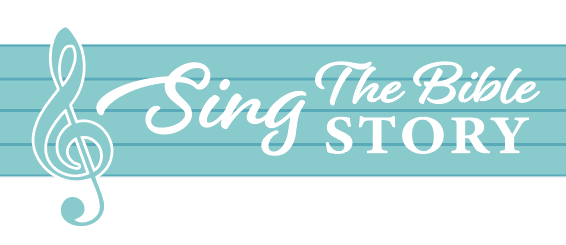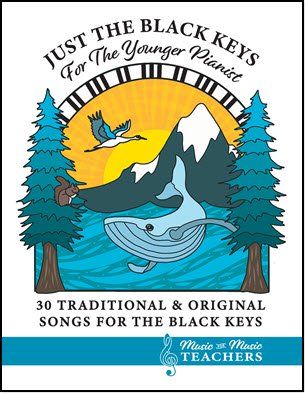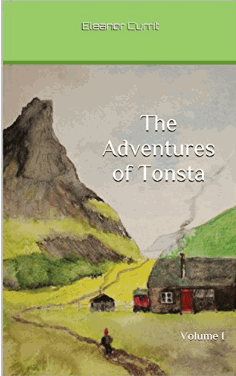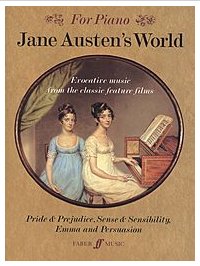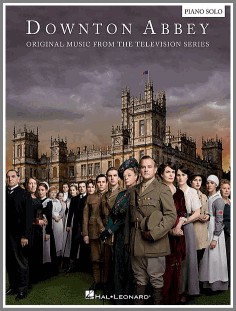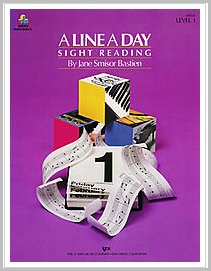Best Piano Books
Best piano books & sheet music- or at least, the ones I find myself using over and over again!
What makes a good piano book?
Let's cut right to the chase - the best piano books are the ones that actually get used, that don't end up forlornly sitting on the shelf, being rejected by student after student.
They are also the books you, the piano teacher, trust and know inside and out.
While I am always on the lookout for new music, there are some books I have come to rely upon. This list of frequently-used books is actually rather short...
Just the Black Keys, for the Younger Pianist
This is my favorite beginner book. Yes, I did write it. There was a need for it!
It works well for kids who need to learn their finger numbers & counting, as well as younger learners who need lots of repetition.
It is a very good way to start children playing real songs, reading the music "code" language, without jumping in "over their heads" into the sea of treble and bass clefs.
I had already been using these songs for some time when I started adding teacher accompaniments - some of them are quite beautiful!
Once they catch the hang of it, the kids love how they can figure out songs with little to no help from me!
Once they catch the hang of it, the kids love how they can figure out songs in the Black Keys book with little to no help from me!
If you look closely at the child's hand in the photo, you'll see red marker on their "2," "3," and "4" fingers. (I always ask their permission to draw on their hands first... and sometimes draw on my own as well!)
The Perfect Start for Note Reading
By Kevin and Julia Olson, The Perfect Start for Note Reading, Book One, is an easy book that keeps students on the same 2 notes for many pages.
Then, just 3 notes for "x" number of pages.
Then, just 4 notes.
You get the idea! Each song tells a short story or shares a feeling or idea, and has truly CUTE ILLUSTRATIONS, simple and blocky-looking. The songs are SHORT.
Any drawbacks to this book? Yes - if this is the ONLY MUSIC in your student's diet, they are likely to always want to put their hands in Middle C position NO MATTER WHAT. Be advised, and supplement their diet while they're learning notes around Middle C.
A "Modern" Course that is almost an antique...
For years, I resisted using the John Thompson series with my students, despite the fact that my sisters and I loved playing out of it as children. It contains fun and delightful music.
Why did I wait so long to introduce it to my own students? Because I heeded the words of a PARENT - NOT EVEN A PIANO TEACHER - who spoke up at a homeschool meeting years ago, and scornfully dismissed the series based on the fact that every finger number is included with the notes, in Book One.
I have decided that she was WRONG.
Note-reading is one skill; reading finger numbers is another. And learning to play a song with EASE because the mind is free to focus on movement of fingers instead of note-reading plus everything else, is another kind of skill!
This book, which is NOT for actual beginners, has independent and even complicated hand coordination in many of its pieces. The joy is that having the fingering makes it achievable in one mental step, instead of several.
When introducing this book to my students, I tell them, "This is a very OLD-FASHIONED book. It is EVEN OLDER than I am. Just look at the pictures."
And guess what? Many of them LOVE the pictures! They are the kind of beautifully-executed illustrations that carry you away, and allow one to dream a bit.
Excellent songs for transposing
"Swans On the Lake" is a big favorite with little girls - in fact, my sisters and I played and played this pretty piece for several years!
And like many of the 5-finger songs in this book, it is easy to transpose, giving it extra usefulness.
With "The Fairies' Harp" we're in the key of G, and executing glissandos, reading ledger line notes, and moving from the bass clef up into the treble clef, and back again. I loved this song as a girl.
We're less than halfway through book One.
Another great song in the John Thompson book... in 6/8 time. This book moves right along, but there is no need to rush.
I recommend staying with songs until they are easily played, unless they are just obnoxious to your student - every book will have some of those! (Personally, I can't abide songs about CLOWNS. There is at least one in this book.)
Books 2, 3, & 4 will delve into classical music, much of it in the original form, and lots of folk music.
But "Long, Long Ago" is still in Book One.
A Book for Learning to Count Aloud
If you peer closely at the cover, you'll discern that this is actually a VIOLIN book.
But ignoring every second page (which will teach melody notes), you can make use of the other pages, which all have rhythm exercises!
Ho-hum, you may say. So what? Well, some of my students say this part of their lesson (called "Drumming") is the favorite part of their lesson! Whacking on the piano lid is a great deal of fun!
Together, we each choose a pen - I have many beautiful pen colors! - and use it as a drumstick to beat out the rhythm shown. (I actually use 2 pens, one tapping the lid with them, and one tapping the book, following along with the exercise.)
Isn't that a nice clean page? No note-reading; just rhythm.
Once they demonstrate they can interpret and tap correctly, we start counting aloud. "1-2, 1-2," etc. If they are too young for that level of sophistication, we start like this: "1-1, 1-1, 1-1," etc.
The lessons progress slowly (here you can see we have moved from 2 beats to 3 beats per measure), but before you know it, we will be at eighth notes! Very fun! And so transferable into their music!
We usually set a little box timer, for 3 minutes. That is their job... I hand it to them and they push a little slider to "ON". Then we see how far we can get before the "BEEP BEEP BEEP".
Here is the table of contents for the first 25 Rhythm lessons.
The sixteenth notes ("one-ee-and-uh, two-ee-and-uh") are challenging but exciting.
Here are the remainder lessons.
So far, none of my students have reached the dotted quarters or the triplets, but very soon!
This is NOT a book I give my students to take home... it is a book that stays at the studio, and comes out during lesson time. (I'm using the SPIRAL-BOUND version, which lays nice and flat.)
Just 3 minutes! With that small investment of time, I have seen real improvement in counting ability. Students feel successful when they understand the rhythms they're dealing with... I frequently tell them that counting is the most difficult thing of all for most musicians.
The Library of Piano Classics
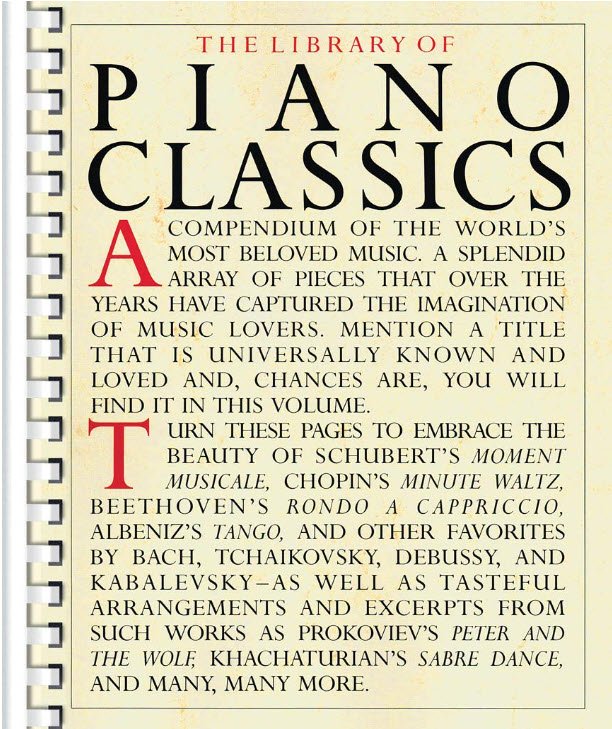
The Library of Piano Classics seems to have most of the classical pieces I learned before college!
Moonlight Sonata, Chopin waltzes and Fantasie-Impromptu, Malaguena by Albeniz, Liebestraum, Clair de Lune, To a Wild Rose, Alla turca (ALL MY STUDENTS want to play that!)... and many, many more.
This book is a real deal.
Sonatina Album, Schirmer #51
For older students approaching the land of classical music, this collection is unbeatable. True, my students may not always agree, but the book is full of scales and chord patterns disguised as pretty, joyous, and thoughtful classical pieces.
Turn to the Table of Contents, and you will see each piece listed twice; once, by page number, and again, at the bottom, progressively, from easiest to most difficult.
There are pieces by Clementi, Kuhlau, Beethoven, Mozart, Bach, and others.
SO MUCH MUSIC - and so cheap.
You can acquire this book at SheetMusicPlus, or at Amazon.
What's included:
- Sonatina in G, Op.55,No.2 Composed by Friedrich Kuhlau, G Major
- Sonatina in C, Op.20 ,No.1 Composed by Friedrich Kuhlau, C Major
- Sonatina in F, Op.36, No.4 Composed by Muzio Clementi, F Major
- Sonatina in G, Op.36 #5 Composed by Muzio Clementi, G Major
- Sonatina in G, Op.20 #1 Composed by Muzio Clementi, C Major
- Andante Grazioso In B flat Composed by Franz Joesph Haydn, Bb Major
- Rondo in C, Op.51 #1 Composed by Ludwig Van Beethoven, C Major
- Variations on 'Vien qua Dorina bella' Op.7 Composed by Carl Maria Von Weber,Carl Maria Von Weber, C Major
- Fantasia In A minor, Op.16 #1 Composed by Felix Bartholdy Mendelssohn
- Sonatina Op.55, No.1 Composed by Friedrich Kuhlau, C Major
- Allegro in F Major Composed by Franz Joesph Haydn, F Major
- Sonatina In C Op.55,No.3 Composed by Friedrich Kuhlau, A Minor
- Symphony No. 1 Composed by Ludwig Van Beethoven, F Major
- Andante Composed by Franz Joesph Haydn, C Major
- Adagio Composed by Franz Joseph Haydn, E Major
- Rondo Composed by Wolfgang Amadeus Mozart,Wolfgang Amadeus Mozart, D Major
- Sonatina Op 36 #6 Composed by Muzio Clementi, D Major
- Sonatina,Op.20,No.2 Composed by Friedrich Kuhlau, G Major
- Sonatina In G Min.,Op.49,No.1 Composed by Ludwig Van Beethoven, G Minor
- Sonatina In G, Op.49,No.2 Composed by Ludwig Van Beethoven, G Major
- Sonatina In C,Op.36,No.1 Composed by Muzio Clementi, C Major
- Sonatina In G, Op.36,No.2 Composed by Muzio Clementi, G Major
- Sonatina In C, Op.36,No.3 Composed by Muzio Clementi
- Prelude #1 From' The Well Tempered Clavier', Composed by Johann Sebastian Bach, C Major
- Scherzo In B Flat Composed by Franz Schubert, Bb Major
- Sonatina,Op.20,No.3 Composed by Friedrich Kuhlau, F Major
Some familiar pieces even to kids
Mozart's Sonata in C may be something your student is already familiar with, as well as the Bach Prelude in C. (Both are shown on my page of classical shorts.)
But... the pieces LOOK harder than they really are, because to produce this very inexpensive edition, the type is unfortunately more cramped than modern, spoiled piano students are used to seeing.
Oops! Did I say spoiled piano students? Well, there DOES seem to be a lot more white space on sheet music pages these days than when I was a teenager, making for a nicer reading experience... but fewer pieces in the books! I have a very nice - pricey - edition of the six Clementi Sonatinas Opus 36, while in this Schirmer edition, all those six sonatinas are just a small part of the whole book.
Look at this page!
It's just broken chords and scales! I love playing snatches of music from this Sonatina book for my students; I say, "Look! It's just broken chords! And scales! And look - MORE scales!"
A book full of beautiful music
I LOVE this book.
The music of Dario Marianelli's movie soundtrack for Pride & Prejudice, once learned, can be returned to again and again with pleasure each time. And your young students will feel so grownup playing the elegant pieces in this collection.
This book will drag a reluctant teenager out of a deep rut, and heave her up onto a new plateau where she will look around bedazzled at the beauty and fun of playing in a semi-classical style. And she will fall in love with her new abilities.
(I say "she", because - strangely - I have never given this book to a boy.)
But don't take my word for it! Check out the - currently - 120+ comments on the Sheetmusicplus website page.
A word of caution: before starting "Dawn", arguably the most beautiful and famous of the pieces in this book, or "Georgiana," the most energetic and perhaps fun to play, be sure to have chord inversions well in hand, HERE, or HERE.
If your student has been dithering around with them and making poor progress, these two pieces may convince her of the need to learn her chords.
Try starting again with my Louie Louie sheet music for piano arrangement, the chord inversion arrangement.
"Dawn", with its long broken chords which span several octaves, and many turnarounds, is also a good piece for hammering into stubborn heads the need for precise fingering!
Other Series, Other Books
What about those extra books that seem to go along with the different methods' Lesson Books?
Most courses have "companion" books for each level of the series... the Theory book, the Technique book, the Repertoire book, etc. Piano Adventures, for example, has a lot of additional books - Jazz, Pop, Rock, Christmas, Folk, Hymns and more.
I like a lot of the repertoire books, and have them on hand for my students.
But personally (SACRILEGE!) I don't use the Theory and Technique books except actually AT THE LESSON for a change of pace, as a way to "spot-check" details.
I prefer to do "hands-on" theory and technique, finding the chords and scales right in their music (after acquainting them with pentascales and chords).
I have purchased all these books in the past, and have found that there just isn't time for it all!
At least, not the way I tend to teach, and not in 30-minute lessons.
I like to give my students extra "fun" music, chord songs, and scale and chord exercises. And I like for THEM to choose much of the extra music.
Some of the Repertoire or "Performance" books are "best piano books"
Levels 4 and 5 of the Piano Adventure Series repertoire books ( "Performance Books") have some really nice pieces. The Level 4 book in particular (which I call "The Yellow Book") is worth buying for your students.
"But I'm happy with my piano method"
If you have a favorite piano method that has worked well for you, then you have a good thing going. I believe that most of the methods will bring your students to the same place eventually.
Individual Pieces
Astronomia (Coffin Dance)
Astronomia, also known as Coffin Dance, has been astonishingly popular at my studio. Yet this piece has been out for a long time - I'm thinking it is one of those "evergreen" pieces.
I personally didn't know this music (no TV in my house!) until one of my grandsons learned it with the help of his Wasilla, Alaska piano teacher. Here, at Musicnotes.com, is the version he plays:
Despite being very repetitious (think "mesmerizing") and full of basic chords, the piece is a CHALLENGE, due to the rhythmic pattern introduced in measure 3, the octaves, & the black keys. But it's SO FUN!!!
Peter Buka, the arranger, is worth following on YouTube for your ambitious students.
But here is the version that found success, and a place in the hearts of even some of my youngest students:
I am telling you that this simple arrangement is the best thing since sliced bread! (An American idiom.) Try it on your young students - they will work & work at this music.
You see how the chord progression is the same, over & over again.
F - G - Am - Am
There is a lot that can be learned with a simple arrangement like this, especially when it comes to hand coordination.
Musicnotes.com allows the printing of the first page, as a free sample - A BRILLIANT MOVE - so that you can try this out on your students, then buy it after they realize they love it!
The Aviators
The Aviators is a lovely piece of music, with the occasional bit of storminess and agitation intruding into the placidity of its 5 pages.
My students have loved it (and an appreciative audience at the local assisted living facility) but it takes a student who appreciates long, beautiful slow notes as well as fast, energy-filled sections.
An excellent piece for encouraging musicality.
You can hear this moving piece on Amazon.
Nuvole Bianche
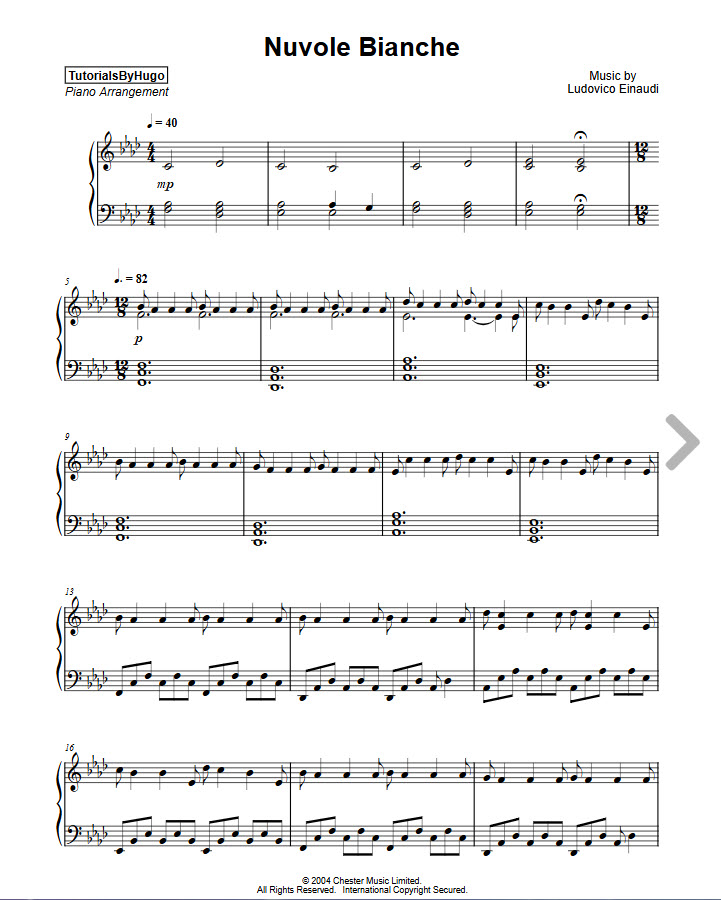
This music, and this particular arrangement of it, has been highly desired at my studio for the last year (2024-2025). Students can listen to it on YouTube, and then you can help them with the details.
There is a lot that they can learn in this - admittedly - repetitious piece. Working with all the flats, some very tricky counting in just a few places, and left hand chords for which the best fingering must be sought!
Find it at Musicnotes.com.
Night Ride
"Night Ride!" This fabulous piece by Robert Vandall is 3 pages of an erupting volcano - or at least a crashing storm.
All of my students want to play it even when they are not ready to READ IT - and if I don't give it to them soon enough, their big brothers or friends will show them how to play it! (Inaccurately, usually.)
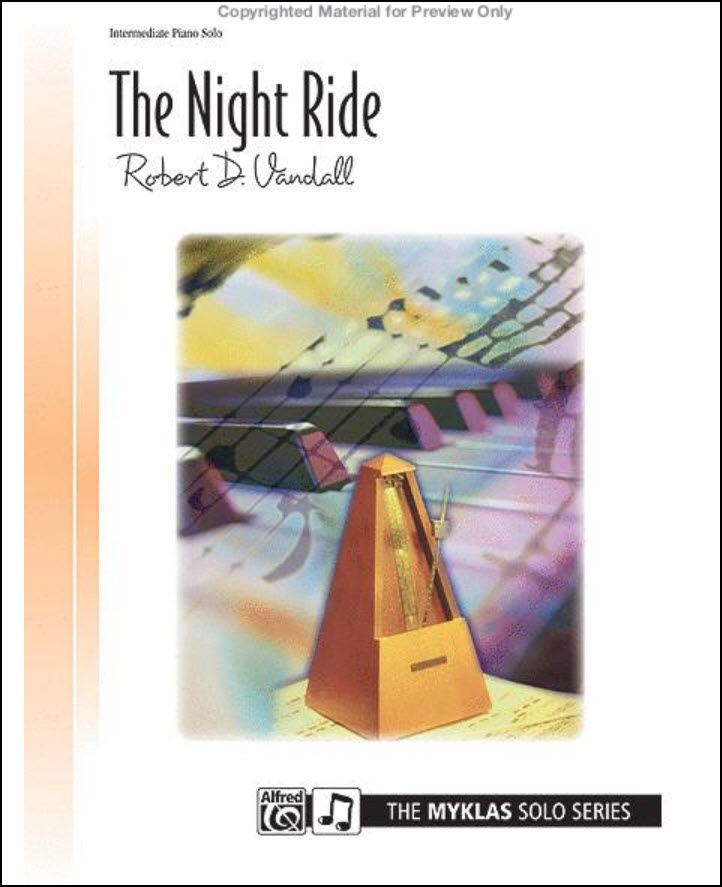
As it takes place almost entirely in the bass clef, kids need to have a good grasp of note reading down below Middle C, or you will be limping along with a bit of reading here and there, but mostly ROTE teaching.
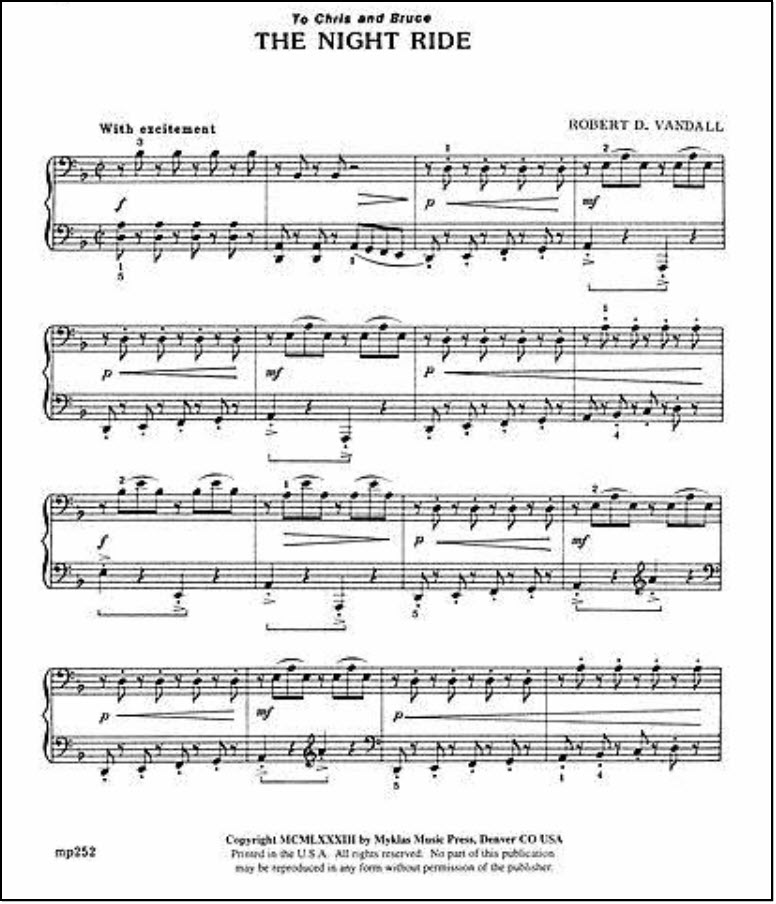
A bit like driving a car - FAST - with a map at which you occasionally dart glances.
Luckily, the piece is full of repeating patterns and scales, and fits in the hands very nicely - no acrobatic fingering required. It's written in Dm and does have quite a few accidentals, for only 2-3 lines . I HIGHLY recommend this piece, for students who are ready.
Well, this is a pretty short list, but I'm talking about the BEST PIANO BOOKS - according to me. I would love to hear about the piano books that you find YOURSELF coming back to again and again!
Music for Music Teachers has other great free resources for piano teachers! Take a look:
Rote Learning - leaving the written page behind (or treating it like a map!)
Dianna:
Your website is a light in the darkness. THANK YOU for all you do in helping to spread the love of music. It matters!
Recent Articles
-
Moonlight Sonata in Cm
Hello! Thank you for sharing the introduction to Beethoven's Moonlight Sonata in C minor! It will be a good trial for a certain student. Can you make -
Farther On, a Beautiful Shape-Note Hymn: vocal ensemble & instruments
Farther On is a beautiful Shape-Note hymn in the Sacred Harp tradition. Download this free hymn sheet music for ensemble, guitar, piano, & lead sheet. -
12 Major Scales Free Download for Piano: Chords, Arpeggios & Scales
12 major scales & chords: free, printable downloads. One & two-octave scales, I, IV & V chords & inversions & arpeggios, & a new PART 2! -
Bach Minuet in G Piano Music: Arrangements for All Levels
The Bach Minuet in G is a famous piece that kids enjoy playing - now with six arrangements, all of your students can conquer this piece. -
Mary Had a Little Lamb for Beginner Piano: Learn How to Add Chords
There is so much you can do with Mary Had a Little Lamb! As piano music for kids, it is unbeatable for showing them how to use chords.
Interested in songs from the Bible for your students or church? Check out my other website, SingTheBibleStory.com!
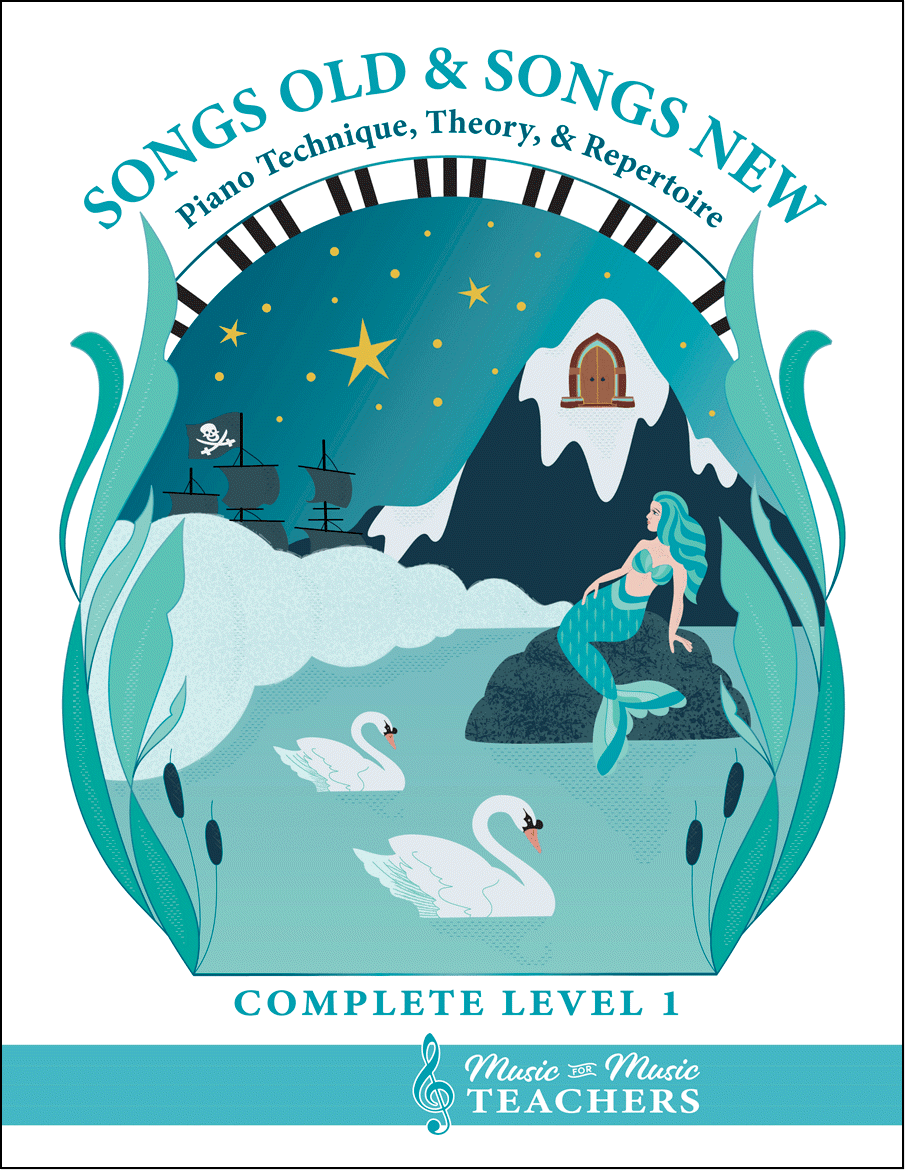
All the first-year material I give my beginner students.
Piano keyboard sheets, scales, chords, note-reading exercises, and over 256 pages of music!
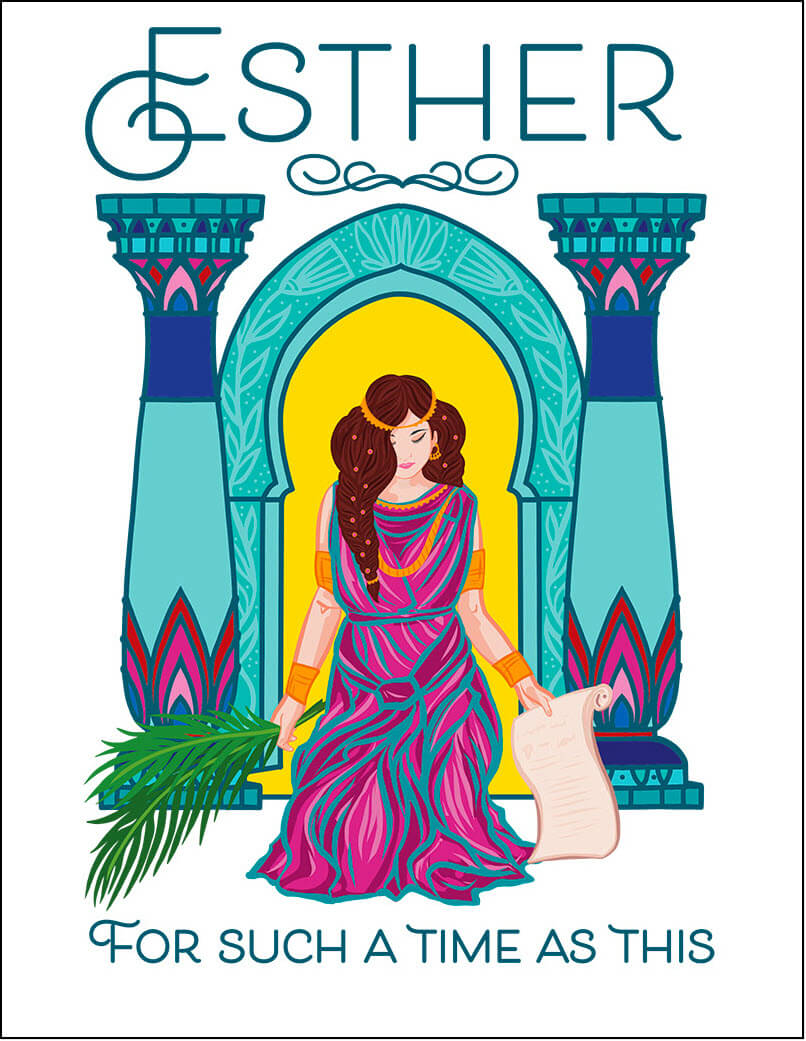
This beautiful song book for piano & voice "Esther, For Such a Time as This", available as a digital download, tells the riveting story of the time when Jews in ancient Persia faced a foe named Haman, and how a brave young queen risked her life to save her people.
A good choice for a singing story-teller, an operatic group, a short theater production, or a class of children!
This book is also available from Amazon as a paperback.
This book is available as a digital download from this site. Visit this page to see some free examples from the book.
It is also available from Amazon as a paperback!
This is the perfect easy start for little pianists.
And when they start reading white-key notes on the staff, this is a fun easy resource to say each week, "Choose a new black-key song at home this week and figure it out to show me next lesson!" They will be spending more time at the piano.
A perfect read aloud storybook
for little boys or girls.
The Adventures of Tonsta highlight the travels of a very young boy with a good heart, who goes about helping folk in trouble.
With a red cap on his head and a sack of tools slung over his shoulder, Tonsta seems to meet people in distress wherever he goes.
Lots of trolls in this book - including one who gives him a Christmas gift!
Cathy:
I recently purchased your arrangement of The Moldau (a longtime favorite of mine).
I wasn't sure if any of my students would be interested in it, but to my amazement 3 of my students LOVE it. Thank you so much for making your great arrangement.
Kim in Washington:
My son is hooked...I've been introducing piano to my son on and off for a year or so, but he's not had much interest. Then I gave him "Monsters Everywhere". He loved playing it with the organ sound on our piano. He memorized it that week and I'm printing off the other Halloween songs to keep him going. I love the detailed instructions on teaching since he is my first student! Thanks so much.
Dana:
That is so neat that your son has experienced the magic and mystery of music through this little song. That is so exciting to me! Thanks for writing, Kim!
Comments: Do you have a story or a question about music teaching? Share it!
Please note that all comments are moderated, and will not appear until I have approved them. Also, IF YOU ARE ASKING FOR MUSIC THAT IS NOT IN THE PUBLIC DOMAIN, YOUR REQUEST WILL BE IGNORED. That's pretty much any music written in the last 75 years...
About the Author

Hi, I'm Dana! (Say that like "Anna".) I'm the owner of Music-for-Music-Teachers.com, and a newer site, SingTheBibleStory.com.
Like some of you, I've been playing the piano since early childhood, and have added a few other instruments along the way, plus an interest in arranging and composing music.
You can find out more about me and the reason for this website at my About Me page.
